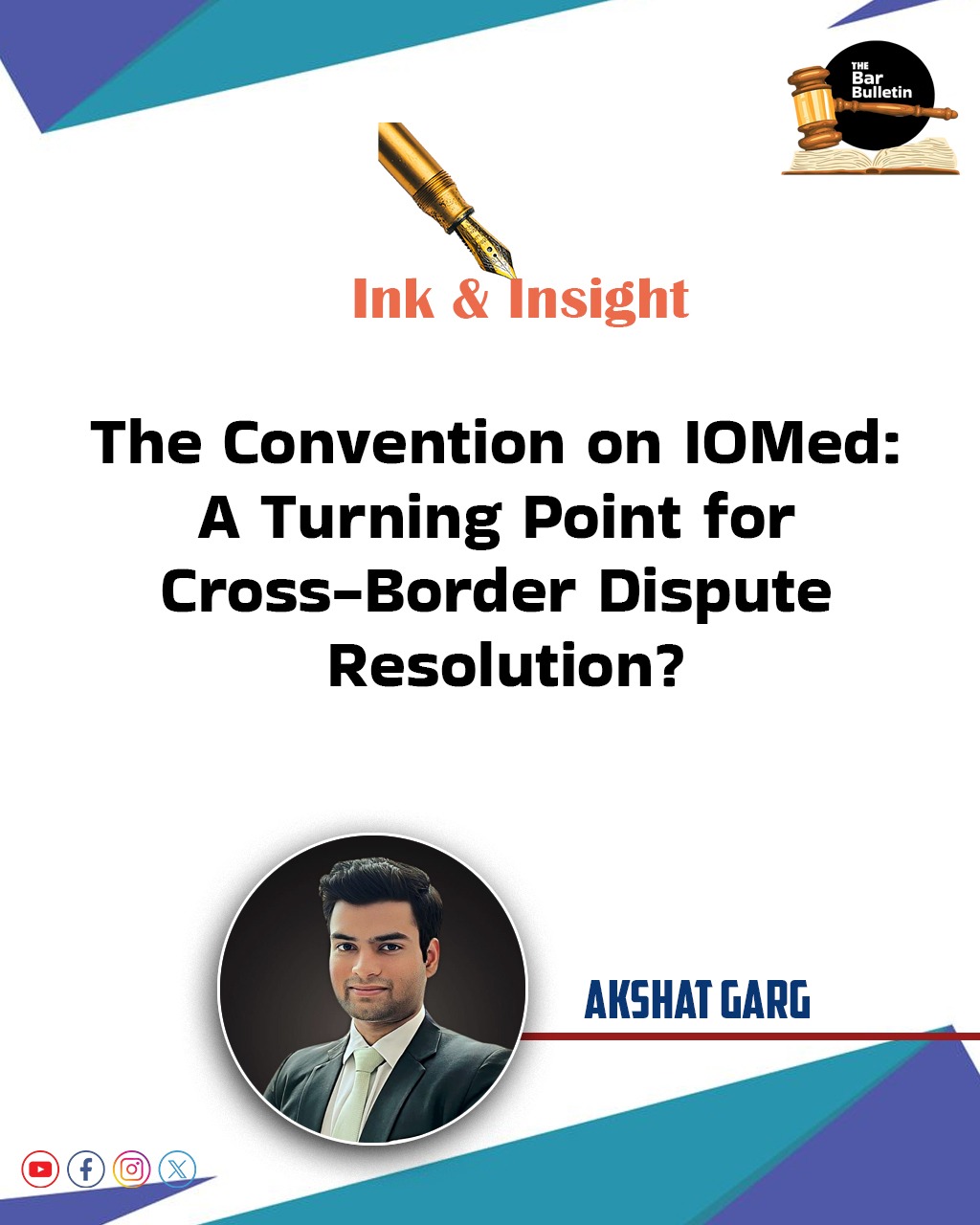A Historic Turning Point in Dispute Resolution
On 30 May 2025, a new chapter unfolded in the evolving story of international dispute resolution. The signing of the Convention on the Establishment of the International Organization for Mediation (IOMed) in Hong Kong SAR by 33 countries formalised the launch of the world’s first intergovernmental legal body dedicated solely to mediation. With over four hundred representatives from eighty-five countries and nearly twenty international and regional organizations in attendance, the signing ceremony was more than a diplomatic milestone; it was a deliberate structural intervention in the global legal landscape.
Mediation Comes of Age Through Institutional Structure
The IOMed Convention (hereinafter as ‘Convention’) has emerged as a solution to a long-standing challenge. Mediation, though widely acknowledged for its potential to foster flexible and amicable dispute resolution, has historically lacked institutional weight enoyed as much as arbitration and litigation. By establishing a formal, treaty-backed framework for international mediation, IOMed does more than endorse mediation, it codifies it as a multilateral public good. It is designed to handel disputes between states, between states and foreign nationals, and international commercial disputes.
Notable Features Shaping IOMed’s Institutional Identity
Legal Personality
Article 6 of the IOMed confers on it the status of an international legal person, capable of entering into agreements, managing assets, and operating across jurisdictions. The establishment of the Governing Council, comprising one representative from each contracting state, is tasked with key administrative and interpretative functions. Leadership roles, namely the Secretary-General and Deputy Secretary-General, are to be filled by nationals of contracting states. This design will reinforce equitable participation of the signatory states while simultaneously incentivizing a wider ratification and adoption of the treaty, as the only pathway to shape its evolution.
Differentiated Mediator Panels
Notably, the Convention builds operational sophistication into its design. Article 19 mandates the maintenance of two panels of mediators, one for disputes between states, and another for those involving states and private parties, including cross-border commercial disputes. Individuals designated to IOMed’s panels of mediators must be of high moral character and demonstrate recognized expertise in fields such as law, commerce, industry, or finance. For the State-to-state mediation panel, the bar is raised even further: appointees are expected to possess deep competence in international law, diplomacy, international relations, or global political and economic affairs, combined with tested political judgment. This structural differentiation acknowledges that mediation, to be effective, must be contextually intelligent.
The Primacy of Consent and Scope for Exclusion
The Convention has reaffirmed party autonomy in its spirit. Consent is not treated as a procedural step, but as a substantive pillar of engagement. States may voluntarily submit disputes, and even the involvement of a third party or third state in any mediation requires explicit consent from that party.
Moreover, Article 25(3) provides that a state may declare categories of disputes, such as those concerning territorial sovereignty, maritime boundaries, or other nationally sensitive matters, as excluded from the scope of IOMed’s services. This ensures that participation is never assumed and that the principle of sovereignty remains intact. In doing so, the Convention creates a legal space that is both principled and pragmatic.
Universality of Access
The accessibility of IOMed’s services extends beyond the circle of signatories. Mediation is open not only to Contracting States, but also to non-contracting states and international organizations. At a time when international adjudicatory forums are often overburdened and political impasses stall progress in many disputes, IOMed offers a credible alternative one that is less adversarial, more cost-effective, and better suited to preserving long-term diplomatic and commercial relationships.
A Procedural Philosophy, not a Judicial Model
This development also signals a broader shift in the legal culture surrounding international dispute resolution. IOMed is not a court. It does not render binding decisions unless parties themselves agree to that framework. It does not mimic the architecture of arbitration tribunals. Rather, it offers a structured mechanism for principled dialogue confidential, consensual, and adaptive. In many ways, IOMed restores the primacy of direct engagement between parties while equipping that engagement with institutional support.
From Facilitators to Global Strategists: The New Mediation Professional
The establishment of IOMed presents a compelling case for the legal profession and policy circles to recalibrate how they view the dispute resolution continuum. The organization’s design calls for a new kind of professional one who is trained not only in legal doctrine but in conflict navigation, negotiation psychology, cross-cultural communication, and systems thinking, As the convention begins to move from signing to implementation, a new cadre of mediators and dispute resolution professionals will be needed individuals capable of engaging within this new framework and contributing to its evolution.
The Road Ahead
For mediation to thrive at the institutional level, its processes must be recognized as serious, sophisticated and scalable. IOMed offers precisely that opportunity. Its structural features, legal personality, differentiated panels, sovereign safeguards, and open access signal a maturing of the mediation field. It will now be up to practitioners, scholars, and states to translate this potential into practice.
***

